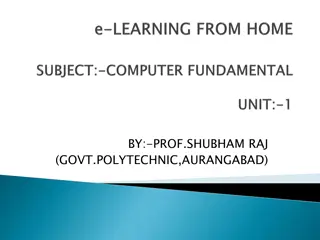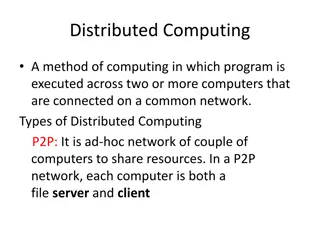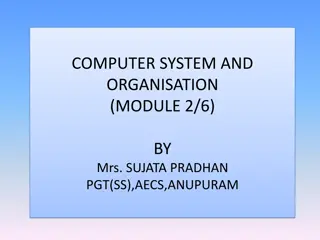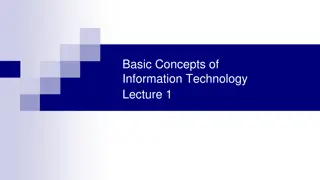Evolution of Computing: From Abacus to Computers
The history of computing traces back to the invention of tools like the Abacus and Napier's Bone, leading to the development of advanced computing devices such as slide rules and ultimately modern computers. Computers have evolved to become programmable machines that receive input, process data, and provide output efficiently, revolutionizing the way we compute and process information.
Download Presentation

Please find below an Image/Link to download the presentation.
The content on the website is provided AS IS for your information and personal use only. It may not be sold, licensed, or shared on other websites without obtaining consent from the author.If you encounter any issues during the download, it is possible that the publisher has removed the file from their server.
You are allowed to download the files provided on this website for personal or commercial use, subject to the condition that they are used lawfully. All files are the property of their respective owners.
The content on the website is provided AS IS for your information and personal use only. It may not be sold, licensed, or shared on other websites without obtaining consent from the author.
E N D
Presentation Transcript
A machine capable of following instruction to alter data in a desirable way and to perform at least some of these operation without human intervention A computer is programmable machine that receives input, stores and manipulates data, and provides output in a useful format. Computer was used as an electronic device that allows inputting data and having it stored, processed, or otherwise manipulated quickly and efficiently.
HISTORY OF COMPUTER The repetitive process of computation leads to people becoming bored in computing such as navigational table, tide charts, and planetary positions for astronomical almanacs. People were doing these things everyday and this is the reason why people invented computers, that is to aid in numerous computation required everyday
COMPUTING AID THAT PEOPLE INVENTED The Abacus The first computing aid that were used to help them in their computation.
THE NAPIER'S BONE An abacus created by John Napier for calculation of products and quotients of numbers that was based on Arab mathematics and lattice multiplication used by Fibonacci writing in the Liber Abaci.
THE SLIDE RULE Used primarily for multiplication and division, and also for scientific function such as roots, logarithms and trigonometry, but is not normally used for addition or subtraction.























